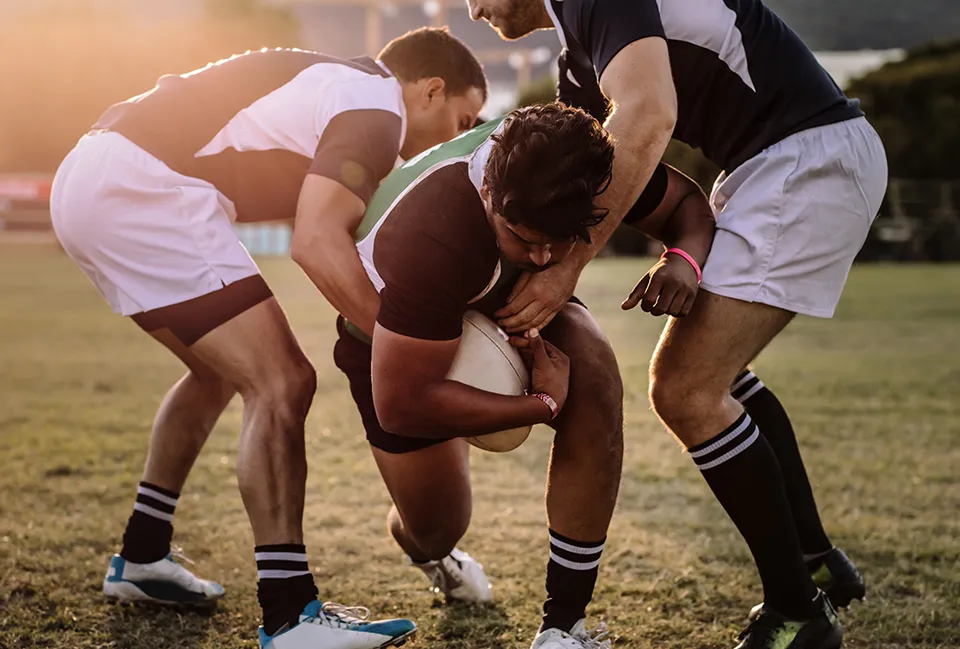Shoulder dislocations commonly occur as a result of an accident. Some people are more predisposed to this than others. As a result of dislocation, damage is often done to the structures that help keep the shoulder in joint. The shoulder is a ball and socket joint, although the socket is very shallow. In order to make it deeper it has a soft tissue socket, called a labrum, which attaches to the bony socket. This is frequently torn off the bony socket following a dislocation.
Once the shoulder has been dislocated once, it is at higher risk of further dislocation.
Every time the shoulder dislocates, further damage can be caused, not only to the bones and ligaments, but also to the rotator cuff tendons, nerves and blood vessels around the shoulder.
Recurrent dislocations can be very restrictive and can significantly affect a person’s trust in their shoulder.

What are the symptoms of shoulder instability?
Shoulder instability can of course be very obvious! However, it can also be very subtle and the joint may not fully dislocate. This is called subluxation.
Once the shoulder has been put back in place or reduced, you may find that putting your arm in certain positions replicates the feeling that the shoulder is about to dislocate. This can be very unpleasant. As a result you may avoid certain activities or movements. You may also experience discomfort, clicking and popping in the shoulder.
How do you diagnose shoulder instability?
This again is usually fairly obvious, however clarifying what structures have been damaged as a result of a dislocation will require further investigation. This is normally done with plain XRs and an MRI scan using a special dye that is injected in to the shoulder joint just before the scan. If a lot of damage has been done to the ball and or socket of the shoulder, a CT scan may also be required.
How do you treat dislocations?
Where the labrum is torn off the bony socket and symptoms persist, a labral repair may be recommended. This is done as a keyhole or arthroscopic operation under a general anaesthetic as a daycase procedure. The labrum is reattached to the bony socket with bone anchors and strong stitches. This largely restores your natural anatomy and significantly improves or even cures your symptoms, but it will not guarantee that your shoulder will not dislocate again.
Where there is significant damage to the ball and or socket a piece of bone may be used to make the socket bigger. This can be taken from your own body or from other sources at your discretion. This is done as an open operation, where a traditional incision is made in the front of the shoulder. This is done as a daycase procedure under a general anaesthetic.
In some cases despite the presence of a labral or bony injury, you may remain asymptomatic as part of your day to day activities and hobbies. As a result non-operative treatment may be suggested. However, once you have a structural lesion, you remain at higher risk of further dislocation.
I couldn’t ask for better. I have had excellent consultations with Mr Edwards. He explains and I understand.
RG 2019